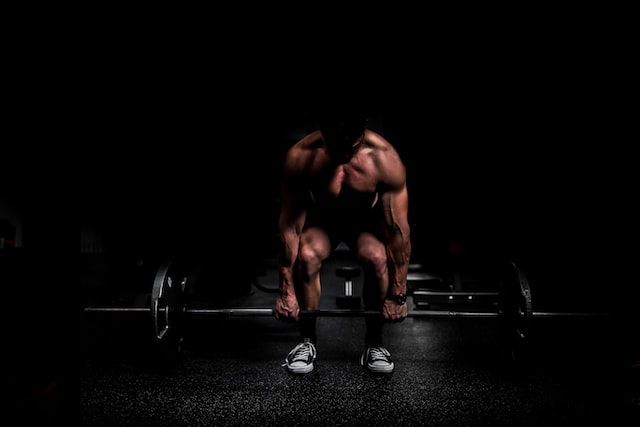Torch fat and build lean muscle with the trap bar deadlift
The trap bar deadlift is one of the best total-body moves to get your heart rate up, burn a ton of calories and build serious muscle size and strength across your legs and torso. It’s also one of the safest ways to lift heavy, so here’s how you can use the hex bar deadlift to get the body you want, says New Body Plan fitness editor Joe Warner
The trap bar is one of the gym’s least loved bits of weight training equipment. But it should be one of your best friends if you want to build a bigger, stronger and leaner physique.
One of the very best moves for build a better body involves the trap bar – and it’s the trap bar deadlift. Add the move, also known as the hex bar deadlift, to your training toolkit to take big steps towards the physique you’ve always wanted!
Find your perfect fat-loss plan!
Take the New Body quiz!
What is the trap bar deadlift?
The trap bar deadlift is a popular variation of the barbell deadlift. Except you use a trap bar with added weight plates instead of an Olympic barbell.
What muscles does the trap bar deadlift work?
The trap bar deadlift works multiple muscle groups at the same time. It hits your quads, hams, glutes, abs, and lower and upper back, and your forearms.
For the reasons detailed below, the move works your quads more and your lower back less than in a barbell deadlift. This makes it a good alternative exercise for building bigger and stronger thighs. Especially if you’ve had lower back problems in the past.
How much does the hex bar weigh?
There is no standardised international size, length or weight for a trap bar or hex bar like there is for an Olympic barbell. Most bars weigh between 20kg and 30kg. You can find out everything you need to know about this clever bit of kit with our expert guide to the hex bar.
Is the hex bar deadlift better than the barbell deadlift?
Better is a relative term in weight training. Why? Because every exercise has some advantages, and disadvantages, over others. It’s why you want to have a wide variety of lifts in your locker. So you can leave no stone unturned in your quest for bigger and stronger muscles.
Deadlifting with a trap bar or hex bar does offer three massive benefits over doing the same move with a barbell. And all three allow you to lift a heavier weight more safely. And that will promote improvements in muscle size and strength.
A neutral grip means a stronger set-up
The first is that the handles allow you to lift with a neutral, or palms-facing, grip. Lifting with this hand position reduces the risk of a biceps-tear injury. And makes it easier to engage the huge pulling-power muscles of your upper back, when doing traditional deadlfits. And it allows you to maintain a better spine position if you tend to “round” your spine when using a barbell.
The high handles put you in a power position
The second benefit again centres on the handles. You have two handle-holding options with a trap bar: the high handles and the low handles. Flipping the bar to use the high handles means you start each deadlift rep from a higher position.
This is good news if you’re tall, or have long legs in relation to your torso, or have restricted mobility. These issues can prevent you getting down low enough to grip a barbell without putting your spine out of position. If you start with your body in a strong body position, it’s much easier to maintain as you deadlift the weight up. But if you start in a weak or poor position you’re never going to be able to lift heavy safely.
Your foot position places more work on your quads
The third advantage is that when you deadlift in a trap bar you don’t start with a barbell against your shins. In a barbell deadlift, you need to keep your hips higher – and so have your spine more horizontal – so that the barbell can pass your shins on the way up without scraping them. In a trap bar deadlift you can have you feet further forward.
This allows your hips to sit a little lower and your spine to remain more vertical. Again, taller lifters, those with long limbs, or mobility issues will benefit the most.
Also, it’s this body position that means you work your quads harder and your lower back less when trap bar deadlifting compared with the main barbell move.
How do I do the trap bar deadlift?
• Position the trap bar on the floor with the hand handles on top. Add equal weight plates to each side.
• Stand instead the bar, bend your knees and grip the high handles with a neutral, palms-facing, grip.
• Keep you chest up, back straight, abs engaged and head facing forward.
• Grip the handles hard then push through your heels to straighten your legs and stand tall.
• Reverse the movement to return the bar back down to the ground. That’s one rep.
To build strength
• Do three to five sets of three to five reps of the hex bar deadlift, resting up three to five minutes between sets.
To build muscle
• Do three to four sets of six to 12 reps of the trap bar deadlift, resting up to three minutes between sets.
To improve endurance and conditioning
• Do lighter weights for high-rep sets (12-20 reps) of the hex bar deadlift with minimal rest between sets.
Find your perfect fat-loss plan!
Take the New Body quiz!
7 ways to eat for fat loss and get a leaner and stronger body

